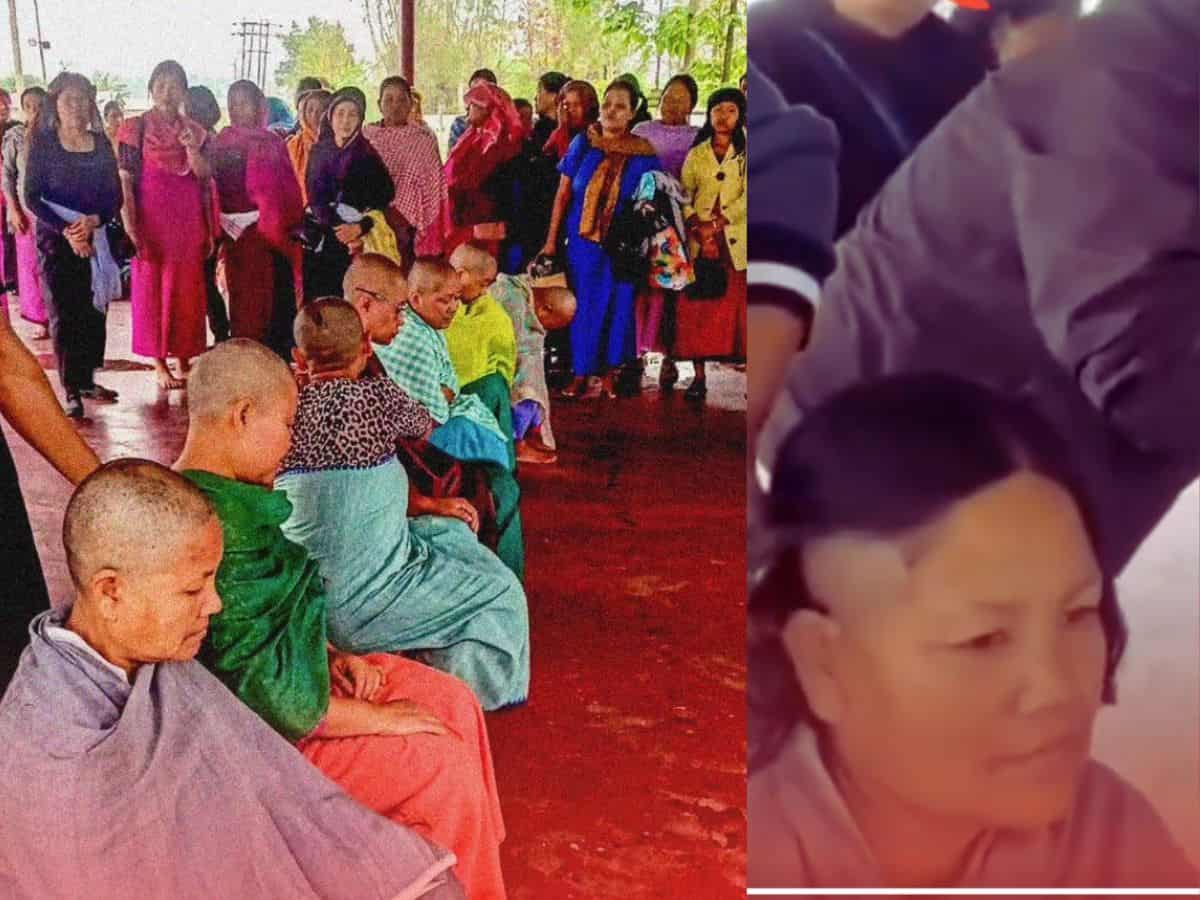
In a powerful display of solidarity, women in Manipur took a bold stand against ethnic violence by shaving their heads and organising a cycle rally to promote peace and unity in the region, NorthEast Today reported.
The symbolic protest took place on Friday, May 3, to send a strong message of resilience and hope amidst the turmoil that has plagued Manipur.
The act of solidarity
The seven women, dressed in black attire, embarked on a cycle rally from Sekmai, a village on the outskirts, to Kangla, situated at the heart of Imphal, covering a distance of approximately 19 kilometres. The women also shaved heads as a symbolic gesture and to protest against the government’s inability to handle issues of the state.
The group of women symbolised a profound commitment to their cause. Standing as a visual representation, the women demanded to restore peace and unity in the state with a proper solution.
Spreading the message
Through their act and the cycle rally, these women sought to spread awareness about the urgent need for harmony and understanding in a region marred by ethnic tensions. By riding from the outskirts to the centre of Imphal, they physically bridged distances and metaphorically connected communities in a call for solidarity and reconciliation.
The conflict
The ethnic violence broke out in Manipur on May 3 after a “Tribal Solidarity March” was organised in the hill districts of the state to protest against the Meitei community’s demand for Scheduled Tribe (ST) status.
The ethnic riot between non-tribal Meitei and tribal Kuki communities has so far claimed 219 lives, injured several hundred and displaced more than 70,000 people of both communities.
In Manipur, the non-tribal Meitei community people account for about 53 per cent of Manipur’s population and live mostly in the Imphal valley. At the same time, tribals – Nagas and Kukis-Zos — constitute little more than 40 per cent and reside in the hill districts.



